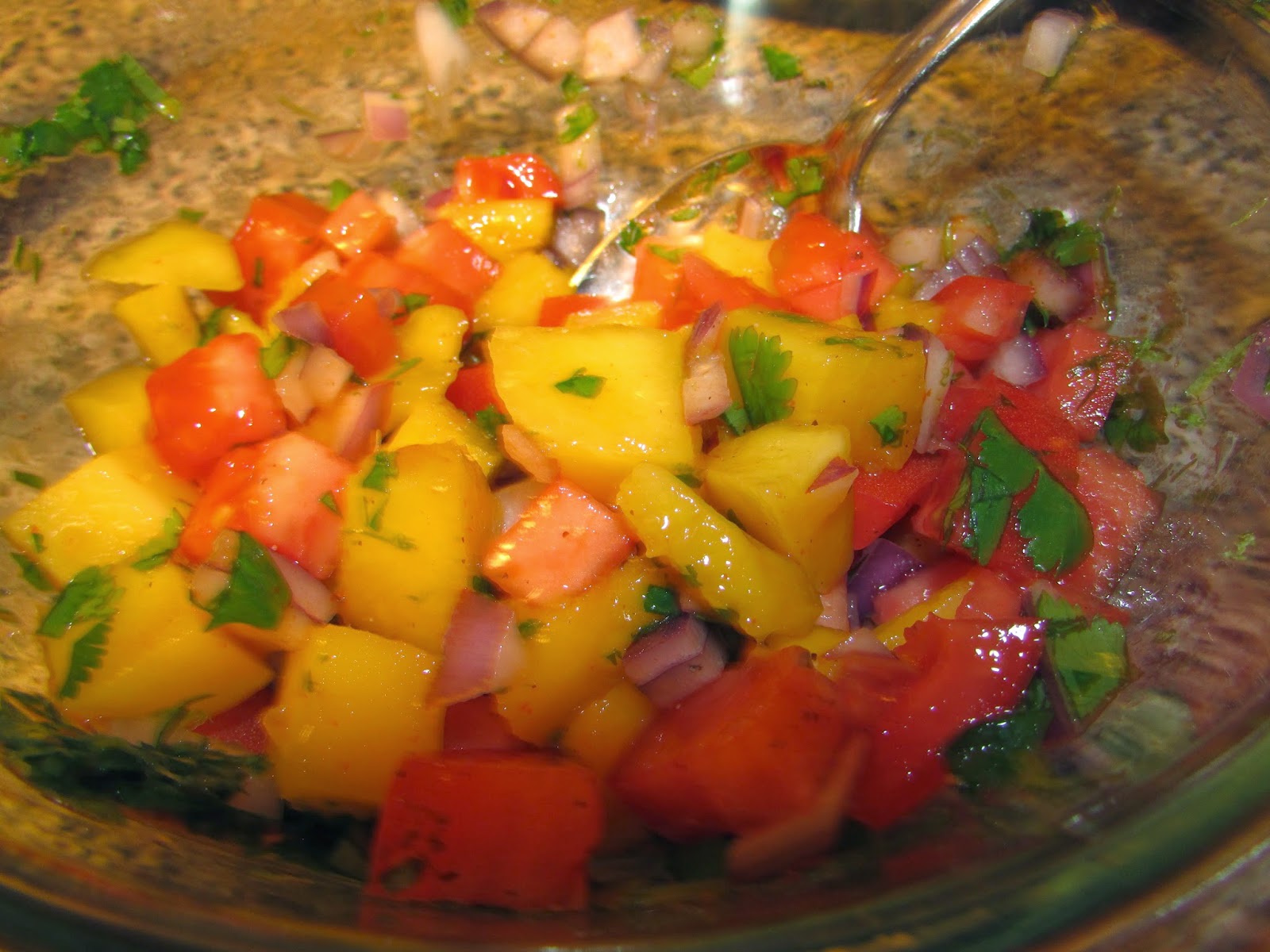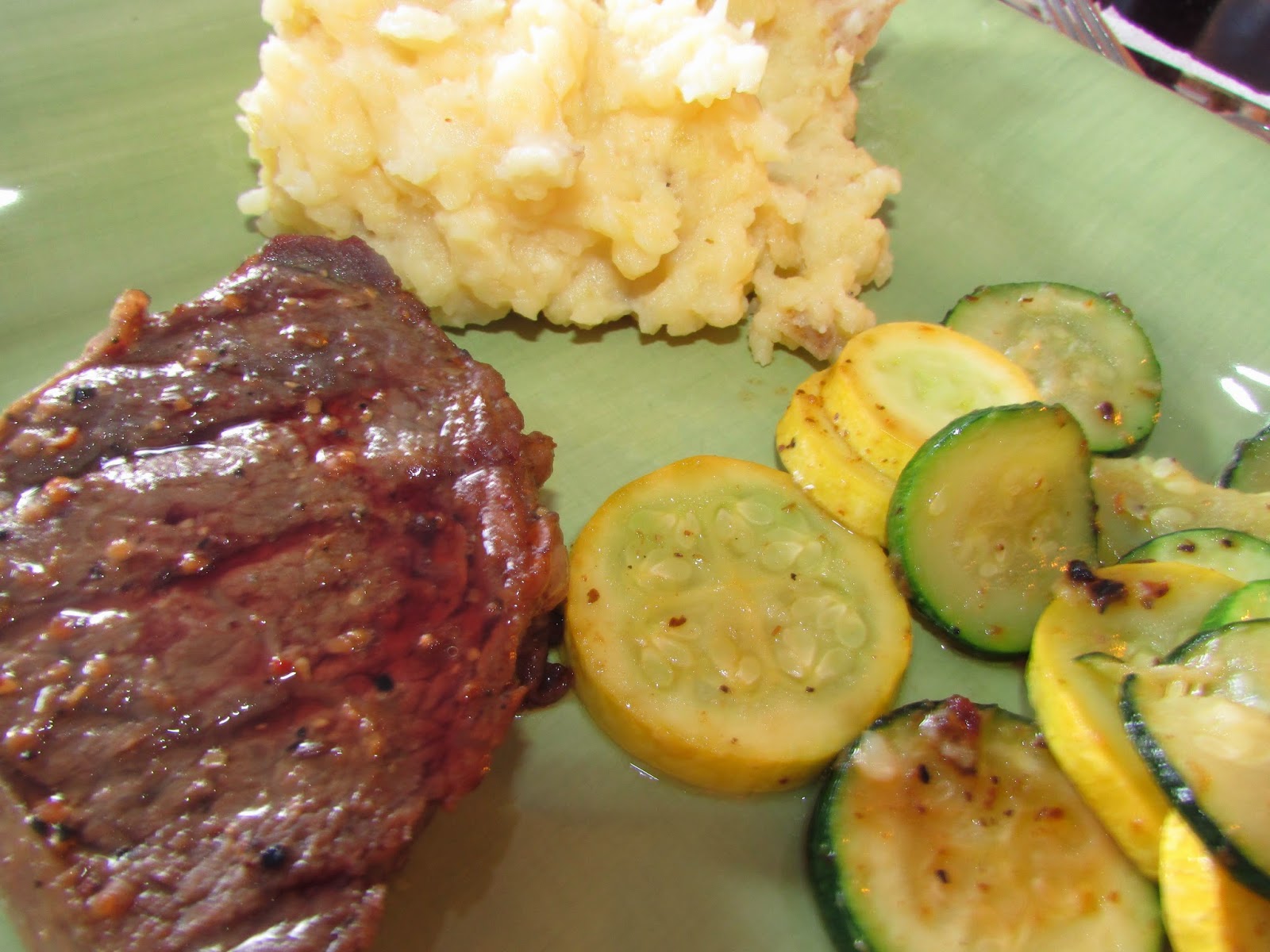Sorry, I couldn't resist. That hashtag is the reason I am staying up way past my "bedtime" writing this post--I must get these dinners written up today, Tuesday!!! ;)
I guess we'll start with yesterday's dinner--Day 113: Marinated Steak, Mashed Potatoes, Seasoned Vegetables
Let's talk about steak. So many people love steak, but are scared of cooking it at home. Getting the temperature and tenderness can be tricky. Then there's questions like, "Do I go with a rub or a marinade?" Well, without overloading you with tons of information about beef, let me give you a quick low-down...
1) Cuts of Beef: If you're looking for a nice, big, tender, juicy steak, you'll probably have to spend a couple extra bucks. The most tender part of a cow/bull would be the tenderloin. (Yes, the name speaks for itself.) The problem is, it's about the smallest part of the animal, which is why it's so expensive. This is where your filet mignon will come from. Now, if you don't want to spend so much, you can also usually get away with buying the parts of beef around the tenderloin. Just look for cuts ending in "loin" i.e. short loin, sirloin, top sirloin, bottom sirloin, etc. The New York strip will come from here, also. Sticking with these names will most likely give you the most tender cut of meat. The tougher cuts will come from the parts of the animal that move the most and are the most muscular: the rear and shoulder. These would be the "round" and "chuck" respectively. Although, the flat iron comes from the chuck and can be tender and is very inexpensive--it's probably the perfect steak to cook at home during the week! Then you have the brisket, flank, shank, and rib. (The rib should be obvious...) These cuts are thin and may be a bit chewy. Marinades help tenderize them and because they're thin, they're great in fajitas and as additives to other meals.
2) Cooking to Temp: For exact cooking temperatures, obviously use a thermometer. 155*-160* is about well-done, 115* is rare. Medium should be about 140*. We like our steak medium-rare. I don't use a thermometer, I use the "thumb/finger" test. By touching your thumb to your index finger, you create a "medium-rare" feeling in your lower thumb, when you touch your thumb to your pinky, you're at well-done. Match these with the feel of the meat, and you're close! Don't forget to give your meat time out of the oven/off the grill to "rest." (The juices will soak back into the meat and the the meat will continue cooking on its own for a few minutes.)
3) Rub or Marinade? Use a marinade when you want your meat to tenderize all day or overnight. A rub is a dry combination of spices and seasonings and you rub it into the meat right before cooking. This is a great way to add flavor and kick at the last minute!
I marinated my steak overnight in a combination of olive oil, soy sauce, and grill seasoning.
With it, I served garlic mashed potatoes and zucchini & summer squash sauteed in butter and grill seasoning (to complement the meat). A perfect summer meal on an 80* May day!
Day 114: Roasted Tilapia with Mango Salsa, Wild Rice, Green Beans
I began by breading my fish. We've talked about this before. A good crust on poultry or fish is created by starting with a good breading process: flour seasoned with salt, pepper, garlic powder if desired (I used it tonight), then an egg wash, and finally, breadcrumbs with additional seasoning. I added dried thyme and lemon zest to my breadcrumbs tonight to go with the fish.
I drizzled the tilapia with olive oil and a little hot sauce before baking it at 400* for about 12-15 minutes.
 |
| Before oven. |
 |
| After oven. |
I've featured mango salsa before, but here I have it broken down with pictures:
 |
| Start with 1 mango, diced. |
 | ||
| Add 1 plum tomato, diced. |
 |
| 1/4 cup red onion, finely chopped. |
 |
| Add 2 TB chopped cilantro, salt, pepper, juice of 1 lime, drizzle of hot sauce. |
 |
| YUM! |





No comments:
Post a Comment